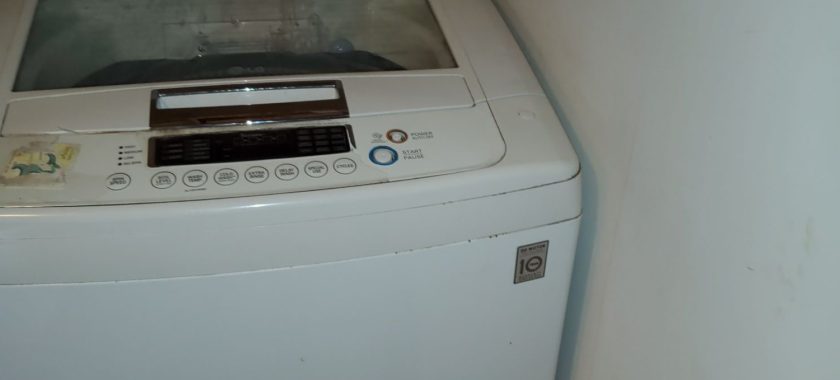A washing machine door leak is one of those frustrating household problems that often appears unexpectedly—just when you thought laundry day was going smoothly. Seeing water pooling around your washer can lead to worries about damage to the floor, wasted water, or even the potential for mold growth. The good news is that this issue usually comes down to two primary culprits: a damaged rubber door seal or loose hinges. Understanding the causes, symptoms, and solutions for these issues can help you identify the problem early and prevent costly repairs.
1. The Role of the Rubber Door Seal
The rubber door seal, also called the gasket, is one of the most critical components of your washing machine. Its job is to create a watertight barrier between the door and the drum during the wash and spin cycles. This seal prevents water from escaping while allowing the door to close securely.
Over time, however, the rubber seal can deteriorate due to several factors:
- Age and wear: Continuous exposure to moisture, heat, and detergents can cause the rubber to harden, crack, or lose flexibility.
- Detergent residue: Excess detergent or fabric softener can build up around the seal, attracting dirt and debris that damage the rubber.
- Mold and mildew growth: Poor ventilation and infrequent cleaning allow mold to grow on the gasket, causing it to warp and lose its sealing ability.
- Foreign objects: Small items like coins, hairpins, or pet hair can get trapped in the folds of the seal, preventing a proper door closure.
When the gasket becomes compromised, water can easily leak from the front of the machine during operation.
2. How to Spot a Damaged Rubber Seal
If you notice small puddles forming under or near the washing machine door, the first thing to check is the rubber seal. Run your hand gently along the gasket and look for:
- Visible cracks, tears, or deformities.
- Mold spots or hardened detergent residues.
- Areas where the seal has loosened or detached from the drum.
You might also notice a musty odor, which indicates moisture is getting trapped and mold is growing inside the folds of the rubber.
3. The Importance of Door Hinges
If the rubber seal looks intact, the next suspect could be the door hinges. Washing machine doors, especially on front-loading models, experience regular pressure from opening and closing. Over time, the hinges can become loose, misaligned, or bent. Even a slight misalignment can prevent the door from closing properly, leaving a small gap for water to escape.
Common signs of loose or misaligned hinges include:
- The door feels “off-balance” when closing.
- You must push the door firmly to make it latch.
- The door does not align evenly with the body of the washing machine.
Loose hinges can also put unnecessary stress on the door latch, eventually leading to latch failure.
4. DIY Inspection and Preventive Care
Before calling a technician, there are a few simple steps you can take to inspect and maintain your washing machine:
- Clean the rubber gasket regularly: Wipe the seal after every few loads using a damp cloth and mild detergent. Make sure to clean between the folds where dirt and soap residue accumulate.
- Run a cleaning cycle: Use a washing machine cleaner or a mixture of vinegar and baking soda once a month to prevent mold buildup.
- Inspect the hinges: Check for any wobbling or looseness. Tighten any visible screws if necessary.
- Avoid overloading: Heavy loads can strain both the door and hinges, causing long-term misalignment and leaks.
If, after cleaning and tightening, the leak persists, the issue likely requires professional attention.
5. When to Call a Professional
If your washing machine continues to leak despite your efforts, the rubber seal may need to be replaced, or the hinges might require realignment or replacement. Attempting to replace the gasket or adjust hinges without proper tools and experience can lead to further damage.
A qualified technician can:
- Safely remove and replace the rubber door seal.
- Clean and disinfect the entire gasket area to prevent mold regrowth.
- Realign or replace door hinges to ensure a perfect seal.
- Inspect the door latch mechanism for proper closure and balance.
6. Preventing Future Leaks
Regular maintenance is key to preventing washing machine leaks. Here are a few expert recommendations:
- Always check the door seal after each wash for trapped debris.
- Leave the door slightly open between cycles to allow air circulation and prevent mold.
- Use the recommended amount of detergent to reduce residue buildup.
- Schedule an annual inspection to catch minor wear before it becomes a major issue.
Ignoring a small leak today can lead to serious problems later—such as damaged flooring, electrical hazards, or even corrosion of the washing machine’s metal parts.
A washing machine door leak may seem minor at first glance, but it’s a sign that something inside your appliance needs attention. Whether it’s a worn-out rubber seal or loose hinges, these issues should be addressed promptly to prevent further complications.
If your washing machine is leaking, don’t wait for the problem to worsen. Contact Chula Vista Appliance Repair Company for fast, reliable, and professional service. Our experienced technicians will diagnose the issue, repair or replace damaged components, and ensure your washer operates like new again.
Keep your laundry room dry, your clothes clean, and your washing machine in top condition—trust the experts at Chula Vista Appliance Repair Company to get the job done right.
Contact us
(619) 880-5508


